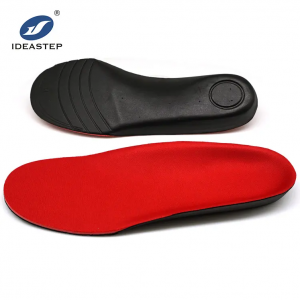
Prefabricated insoles, often made from materials like EVA foam, serve several functions when used in footwear:
- Cushioning: Insoles provide cushioning and shock absorption, reducing the impact on the feet during walking, running, or other activities. This helps to alleviate discomfort and prevent injuries such as stress fractures or plantar fasciitis.
- Support: Insoles can provide additional support to the arches of the feet, helping to distribute weight more evenly and maintain proper foot alignment. This is particularly beneficial for individuals with flat feet or high arches, as it can help reduce strain on the feet and lower limbs.
- Stability: Prefabricated insoles can enhance stability by improving the contact between the foot and the shoe. They can help prevent excessive foot pronation (inward rolling) or supination (outward rolling), promoting a more neutral foot position and reducing the risk of ankle sprains or other instability-related issues.
- Pressure Relief: Insoles with specialized features such as gel pads or metatarsal support can help alleviate pressure points and discomfort in specific areas of the foot, such as the heel or the ball of the foot. This can be particularly beneficial for individuals with conditions like plantar fasciitis, bunions, or Morton’s neuroma.
- Comfort: Insoles can enhance overall comfort by providing a softer and more cushioned surface for the feet. They can help reduce fatigue, absorb moisture, and provide a more pleasant walking or standing experience.
It’s worth noting that while prefabricated insoles offer general benefits, customized orthotic insoles, which are specifically tailored to an individual’s foot shape and needs, can provide even more precise support and address specific foot conditions or biomechanical issues.
Expand more related content: https://www.aideastep.com/classic-pre-fabricated-orthotics/.
